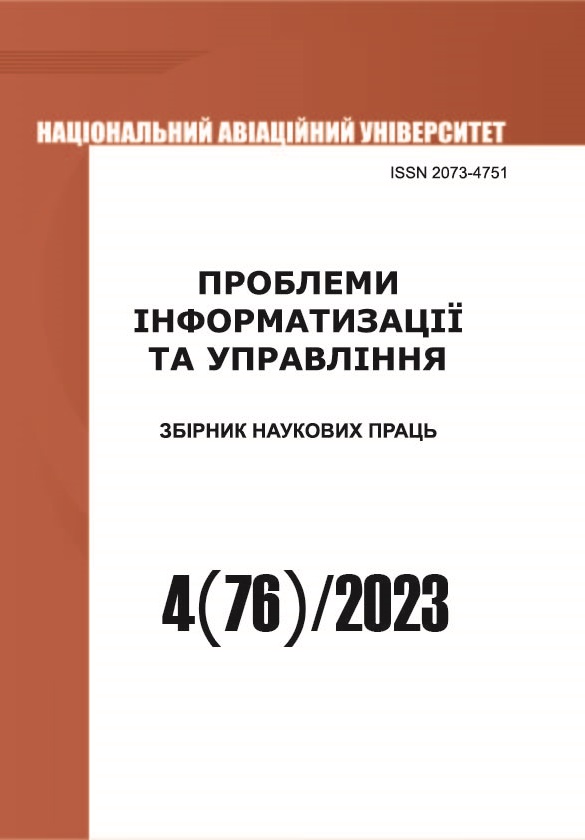The method of measuring the rotary moment of electrode-hun using methods of machine vision
DOI:
https://doi.org/10.18372/2073-4751.76.18238Keywords:
torque, machine vision, measuring transducer, torque coupling, device sensitivity, accuracyAbstract
This article presents a new approach to measuring the torque of electric motors using machine vision technologies. The main goal of this study is to develop a measurement method that minimizes interference with the operation of the electric motor. It has been studied how image processing and data analysis algorithms are used to interpret visual information obtained from the rotating elements of the engine. In the theoretical part of the article, the principles of machine vision are considered, as well as the existing methods of torque measurement are analyzed, indicating their limitations and potential areas for improvement. The scientific contribution of the work consists in the use of combined methods of image processing and analytical algorithms to determine the rotation parameters. The experimental part includes the development of modeling of the dependence of the torsion angle of the dynamometric coupling and the change of the visual parameter, which is determined by optical means, using machine vision.
References
Ma Z., Choi J., Sohn H. Real-time structural displacement estimation by fusing asynchronous acceleration and computer vision measurements. Computer-Aided Civil and Infrastructure Engineering. 2021. V. 37. Iss. 6. P. 688–703.
Kumar V., Wang Q., Minghua W., Rizwan S., Shaikh S.M., Liu X. Computer vision based object grasping 6DoF robotic arm using picamera. 2018 4th International Conference on Control, Automation and Robotics (ICCAR) / Auckland, New Zealand, 2018. P. 111–115.
Secuianu D., Lupu C. Implementation of a home appliance mobile platform based on computer vision: self-charging and mapping. 2018 22nd International Conference on System Theory, Control and Computing (ICSTCC) / Sinaia, Romania, 2018. P. 464–468.
Gorakala A.C., Vuyyuri L., Jyothirmaie D., Muinuddin M.K., Chisti. Audio-Video Scrutinizing bot with Night Vision. International Research Journal of Engineering and Technology (IRJET). 2021. V. 8.Iss. 5. P. 2144–2150.
Cubero S., Marco-Noales E., Aleixos N., Barbé S., Blasco J. RobHortic: A Field Robot to Detect Pests and Diseases in Horticultural Crops by Proximal Sensing. Agriculture. 2020. V. 10. No. 7. 276.
Sangdani M.H., Tavakolpour-Saleh A.R., Lotfavar A. Genetic algorithm-based optimal computed torque control of a visionbased tracker robot: Simulation and experiment. Engineering Applications of Artificial Intelligence. 2018. V. 67. P. 24–38.
Zappalá D., Bezziccheri M., Crabtree C.J., Paone N. Non-intrusive torque measurement for rotating shafts using optical sensing of zebra-tapes. Measurement Science and Technology. 2018. V. 29. No. 6. 065207.
Alejandro Fabio Veyrat Durbex, Yaki Nachajon Schwartz, Hernán Tacca. Solutions for Torque and Speed Measurement on Electric Machine Controllers Test Benches. Revista electron. 2021. V. 5. No. 1. P. 20–31.
Sue P., Wilson D., Farr L., Kretschmar A. High precision torque measurement on a rotating load coupling for power generation operation. 2012 IEEE International Instrumentation and Measurement Technology Conference Proceedings / Graz, Austria, 2012. P. 518–523.
Безконтактний вимірювач крутного моменту, частоти обертання вала та його прискорення: пат. 139522 Україна: G01L 3/00. № u201906456; заявл. 10.06.2019; опубл. 10.01.2020, Бюл. № 1/2020.
Main T.J., Brown T. The Indicator and Dynamometer (1864). Kessinger Publishing, 2010. 102 p.
Квасніков В.П., Братченко Г.Д., Квашук Д.М. Оцінювання невизначеності вимірювання обертальних моментів електродвигунів на базі теорії нечітких множин. Збірник наукових праць Одеської державної академії технічного регулювання та якості. 2023. В. 1(22). С. 23–34.
Downloads
Published
Issue
Section
License
Автори, які публікуються у цьому журналі, погоджуються з наступними умовами:- Автори залишають за собою право на авторство своєї роботи та передають журналу право першої публікації цієї роботи на умовах ліцензії Creative Commons Attribution License, котра дозволяє іншим особам вільно розповсюджувати опубліковану роботу з обов'язковим посиланням на авторів оригінальної роботи та першу публікацію роботи у цьому журналі.
- Автори мають право укладати самостійні додаткові угоди щодо неексклюзивного розповсюдження роботи у тому вигляді, в якому вона була опублікована цим журналом (наприклад, розміщувати роботу в електронному сховищі установи або публікувати у складі монографії), за умови збереження посилання на першу публікацію роботи у цьому журналі.
- Політика журналу дозволяє і заохочує розміщення авторами в мережі Інтернет (наприклад, у сховищах установ або на особистих веб-сайтах) рукопису роботи, як до подання цього рукопису до редакції, так і під час його редакційного опрацювання, оскільки це сприяє виникненню продуктивної наукової дискусії та позитивно позначається на оперативності та динаміці цитування опублікованої роботи (див. The Effect of Open Access).


